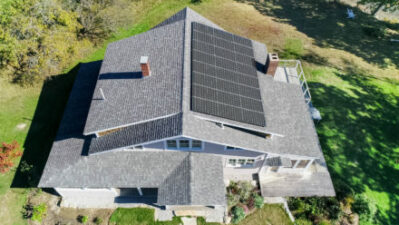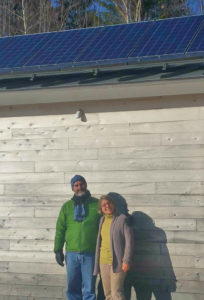
10 Jun How Solar Technology Benefits Homeowners
By Sarah Lozanova
Published June 2, 2017, in Triple Pundit.
 Energy production has changed dramatically in the last decade. There is enough solar energy capacity in the United States to power 8.3 million homes. In fact, solar power accounted for 39 percent of the new electricity generation capacity in 2016, exceeding new coal, natural gas, and wind energy capacity. In the last ten years, the cost of solar energy has plummeted by over 60 percent – making it a smart investment both economically and environmentally.
Energy production has changed dramatically in the last decade. There is enough solar energy capacity in the United States to power 8.3 million homes. In fact, solar power accounted for 39 percent of the new electricity generation capacity in 2016, exceeding new coal, natural gas, and wind energy capacity. In the last ten years, the cost of solar energy has plummeted by over 60 percent – making it a smart investment both economically and environmentally.
Solar energy technology advances have helped to minimize the impacts of shading, increase the efficiency of the solar array, and enable web-based solar system monitoring. Homeowners can now convert more sunshine into electricity, gather system electricity production information from afar, and even install productive solar systems on complicated rooftops. These technology advances will help further the solar industry and promote wider use of solar energy.
Solar equipment solutions for low-light condition
Shading from trees, buildings, and other obstructions can dramatically decrease the output of a home solar system. Even a chimney or dormer on the house can make a big dent in overall solar electricity production. There are now solar technologies that mitigate this issue because some solar panels are less impacted by shading or cloudy weather.
Solar inverters convert DC electricity to AC. Inverters have advanced considerably in recent years and are now the brains of many solar PV systems. This achievement has increased the productivity and agility of many solar energy systems. Some inverters use multiple power point tracking to reduce the impacts of shading.
Microinverter and power optimizer technology enable every solar panel to function independently. This prevents the “Christmas tree light effect,” where an underperforming solar panel can dramatically and disproportionately reduce the total PV system output. Microinverters and power optimizers are especially useful when the solar array is partially shaded or has soiled PV panels.
“Another great benefit of this technology is its troubleshooting capability,” said Chuck Piper, co-owner of Sundog Solar, a Maine solar installation company. “A homeowner can view her system in real time and spot potential problems for quick repairs. In the past, a system problem may not have surfaced for several months, leading to power production loss.”
Increased PV panel efficiency
Solar panel efficiency is determined by the ratio of sunlight converted to electricity. This is important because more solar energy can be generated in the same amount of space. In other words, homeowners can produce a larger quantity of solar electricity in a limited space. The first solar cells were less than 2 percent efficient. In recent decades, solar panel efficiency has skyrocketed. There are now PV panels on the market that are 22 percent efficient, and most panels are between 14 and 16 percent. There have been promising laboratory advances towards solar panels that are 50 percent efficient which will continue to drive costs down.


